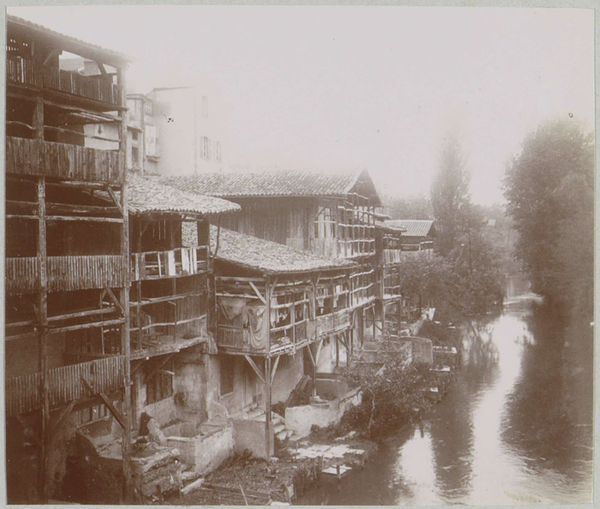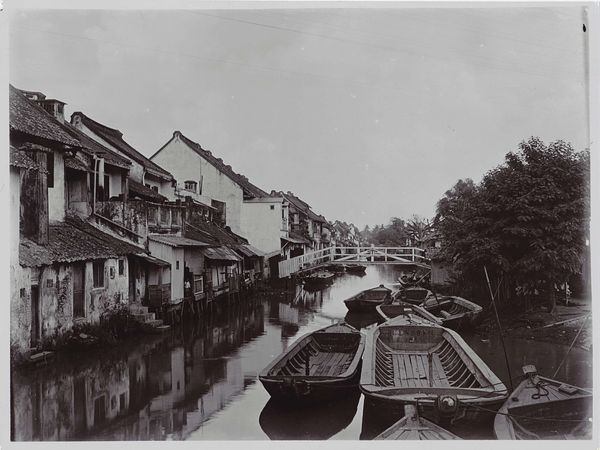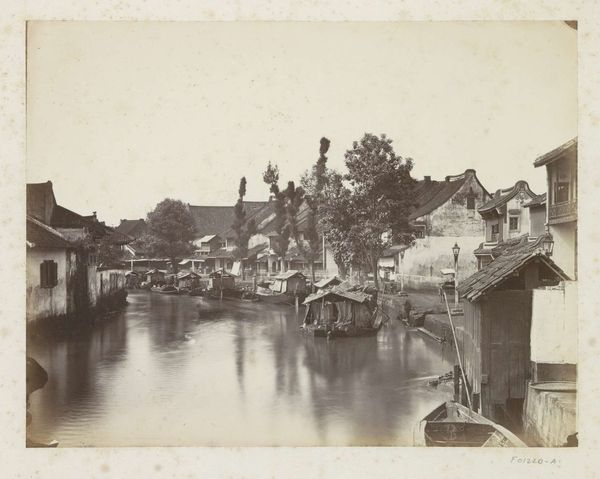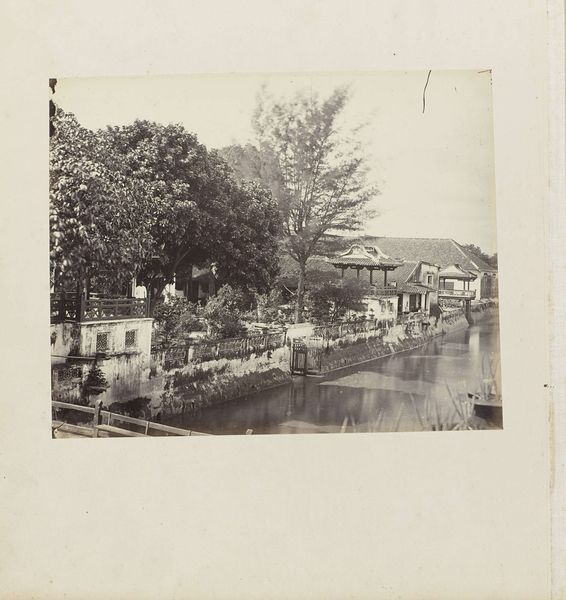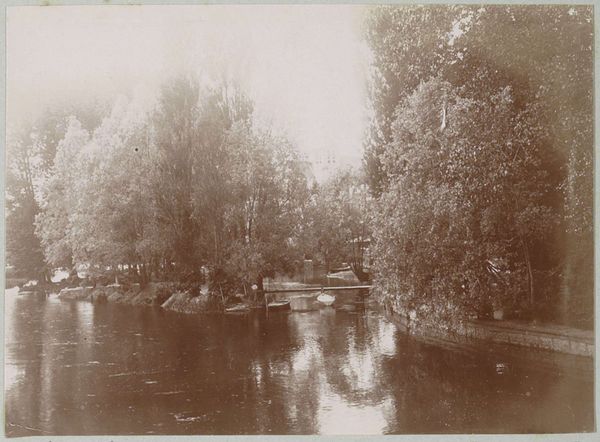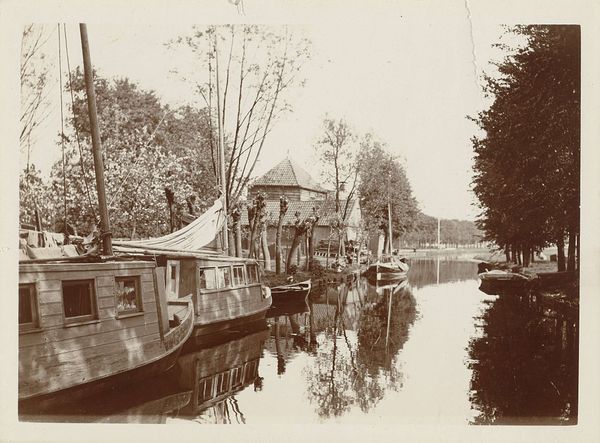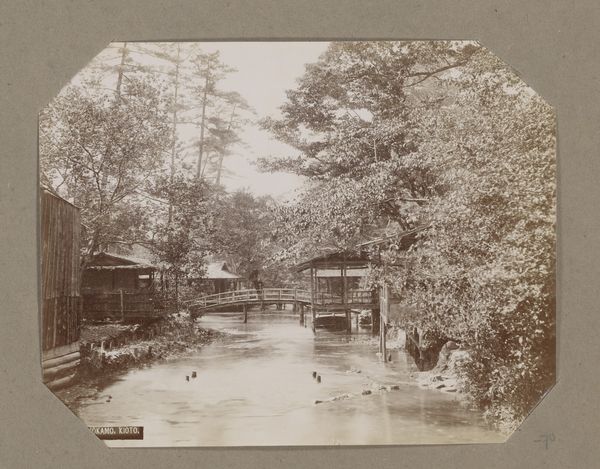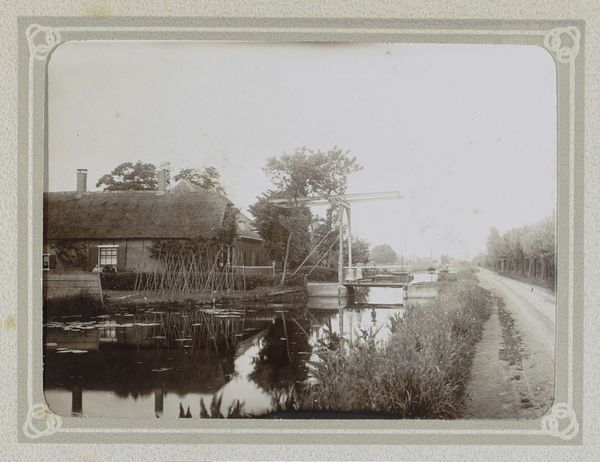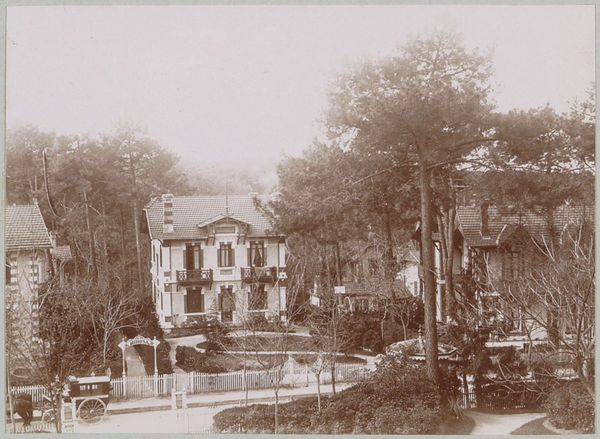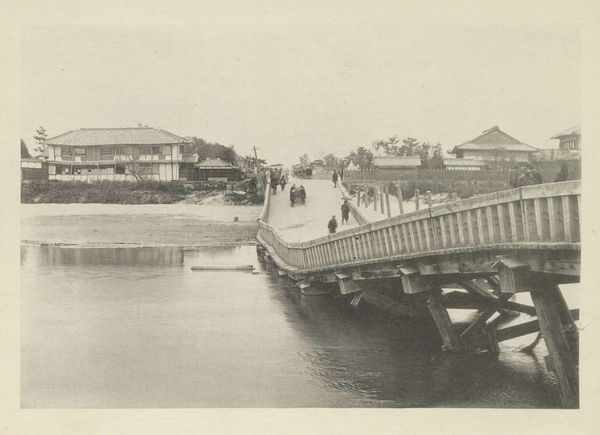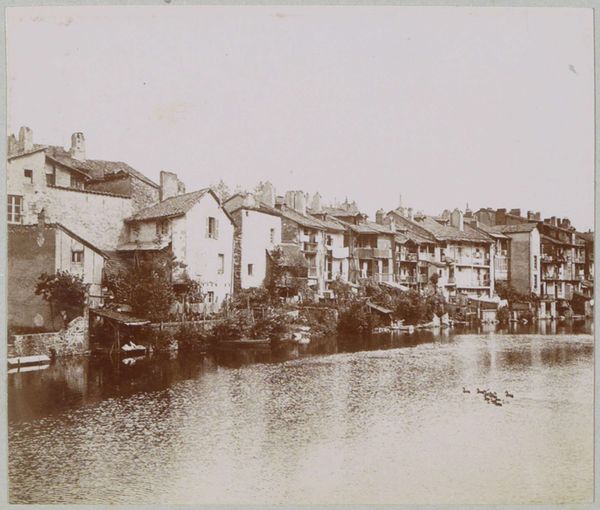
Dimensions: height 69 mm, width 82 mm
Copyright: Rijks Museum: Open Domain
Editor: Here we have "Leerlooierijen langs de Morge in Maringues," taken in 1903 by Delizy, a gelatin-silver print residing at the Rijksmuseum. The muted tones create a melancholic atmosphere, almost dreamlike. What first strikes you when you view this piece? Curator: I'm drawn to the river's reflections mirroring the buildings, a kind of visual echo that speaks to the cyclical nature of life and labor. Notice how the buildings cling to the river’s edge, a symbol of humanity's persistent relationship with nature for sustenance. But look closer, what do those reflections communicate to you? Editor: They seem to double the presence of the buildings, making them seem almost ethereal. I can almost feel the presence of the tannery workers along the riverbank. The reflections make me wonder if they saw their own actions reflected in the water and within the culture surrounding them. Curator: Precisely. Consider the symbolism of water: purification, renewal, but also a repository of memory. This image captures a specific moment, but the reflections hint at the countless repetitions of that moment, the daily grind of the tanneries etched into the cultural consciousness of Maringues. Are these memories positive or negative, though? What would you assume from a contemporary perspective? Editor: Well, tanning can be quite toxic. Perhaps this symbolizes not just industry, but also environmental strain? The cost of progress perhaps? Curator: Exactly. It's a powerful visual statement about our symbiotic, if sometimes destructive, relationship with the environment. It makes me think of other artists tackling related symbolism of rivers as literal and figurative borders or meeting points. The river's capacity to support life, while industry potentially degrades it... it's all captured within Delizy's work. Editor: That’s a compelling way to look at it; thank you for guiding me through the deeper meanings embedded within the reflections and subject matter. It really emphasizes how photos from the past can illuminate cultural connections to environment and production. Curator: Indeed. Visual media allows us to understand aspects of cultural memory in a non-verbal way, and I also learned through the process of explaining what jumped out at me!
Comments
No comments
Be the first to comment and join the conversation on the ultimate creative platform.
